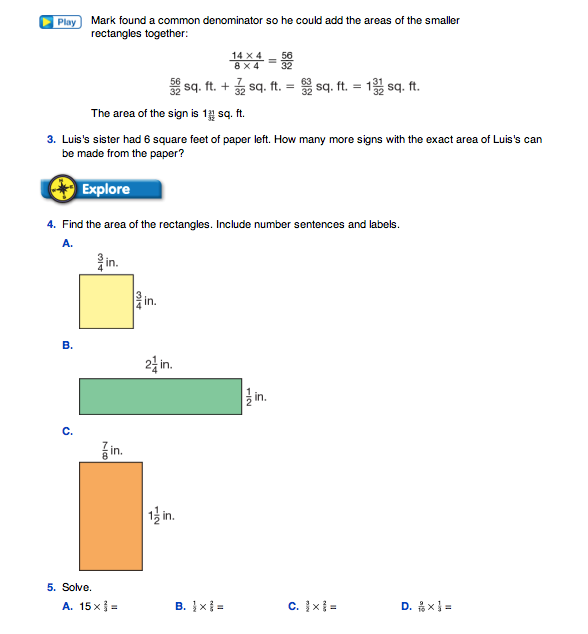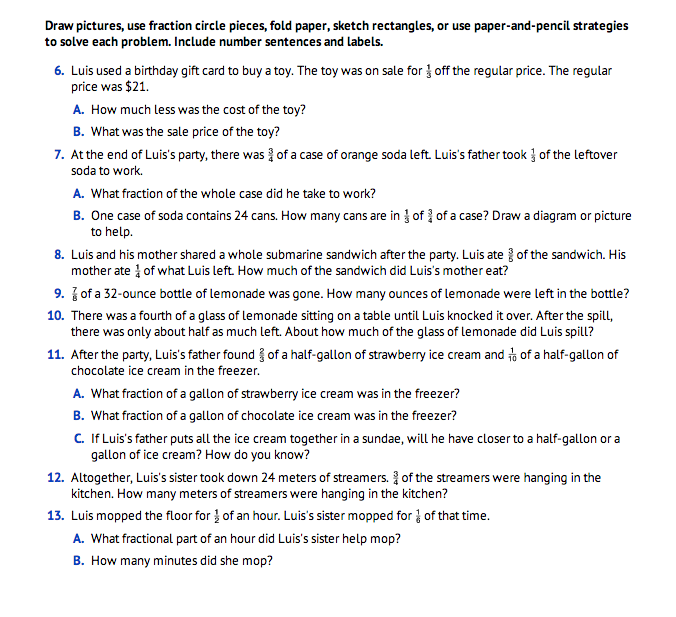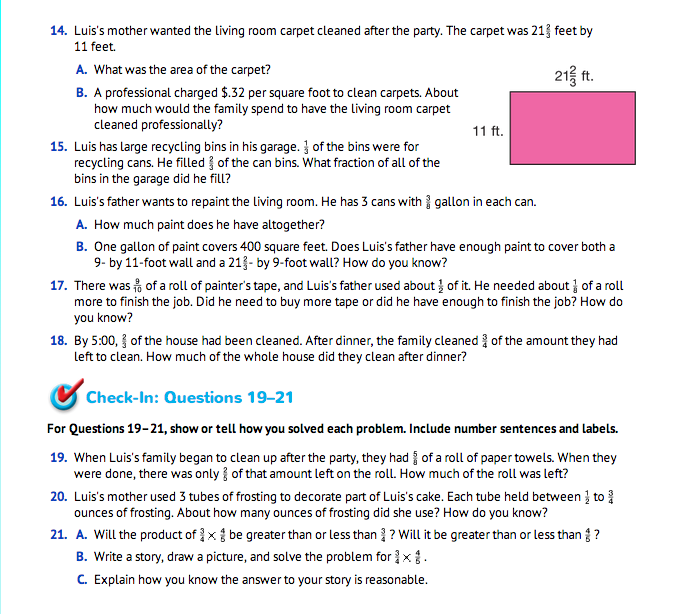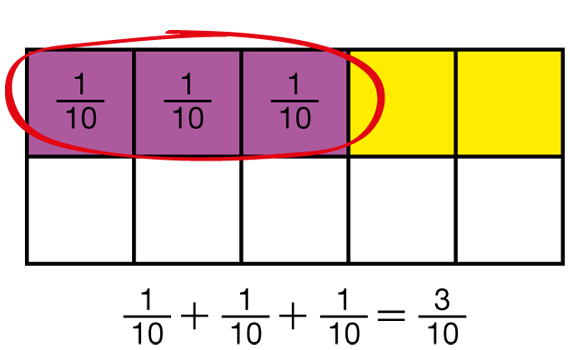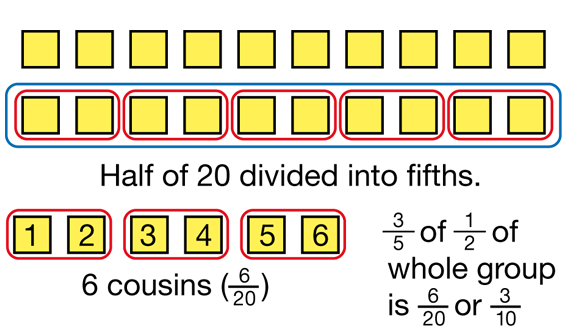Solving Fraction Multiplication Problems
Est. Class Sessions: 2Developing the Lesson
Model the Multiplication. Present this word problem to students:
One-half of the guests at Luis's party were relatives. Three-fifths of the relatives were cousins. What fraction of his guests were cousins?
Ask:
Help students understand and visualize the multiplication in the problem by modeling it. To find 3/5 of 1/2, first display a pink half.
Demonstrate the process as you ask:
Place 5 purple pieces onto the pink piece, and then remove 2 purple pieces to show 3/5.
Ask a student to demonstrate how to check the problem by solving it with a rectangle model. See Figure 1.
Model with Counters. Multiplication of fractions such as 3/5 × 1/2 can be modeled with connecting cubes or any counters; however, students may need help finding ways to determine the whole. Tell students a similar problem in which the whole is given:
There were 20 guests at Luis's party. Remember, one-half of the guests were relatives. Three-fifths of the relatives were cousins. What fraction of his guests were cousins?
Guide student pairs as they use 20 connecting cubes to model the problem. Demonstrate the process using a display set of connecting cubes. See Figure 2.
Ask:
Display the number sentence 3/5 × 1/2 = 3/10. Take the problem further by asking students to review multiplying a fraction by a whole number.
Ask:
Remind students that some strategies are more appropriate for some problems than others. A goal is to have many ways to understand and solve problems so that you can choose appropriately from the variety of strategies.
Solve Fraction Multiplication and Area Problems. Display and direct students to the Solving Fraction Multiplication Problems pages in the Student Guide. The following problem is presented:
The Happy Birthday sign at Luis's party was 21/4 feet long and 7/8 feet wide. What is the area of the rectangular sign?
Assign Questions 1–3. In Question 1, students work with a partner to find the area of the sign. Upon completion of the questions, discuss a few students' solution strategies. Remind students to use square units when reporting area. Using a display of Question 2 the Solving Fraction Multiplication Problems page, discuss Mark's solution. He partitions a rectangle, computes the partial products, and finds the area of the rectangular sign.
Discuss Question 3 and ask:
Assign Questions 4–18. In Question 4, students find the area of small rectangles like Mark did in the example problem. In Question 5, students solve equations involving fraction multiplication. Students solve fraction multiplication word problems in Questions 6–18 using any strategy they like. Some problems simply require estimation. Encourage students to draw pictures, use fraction circle pieces, fold paper, sketch rectangles, or use a paper-and-pencil method to find products. Remind them to include number sentences and labels in their answers.













